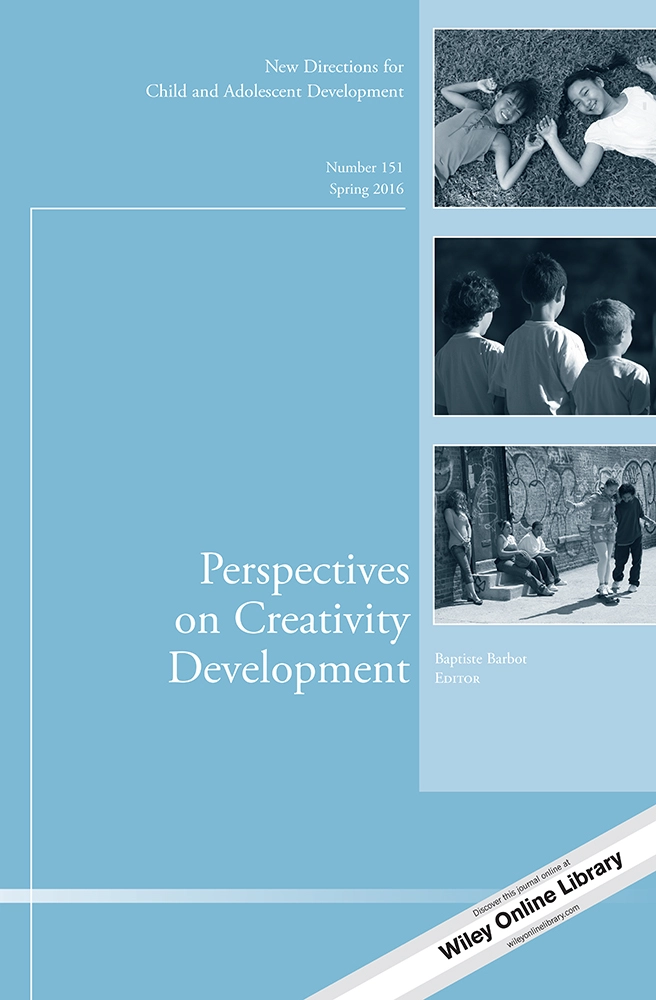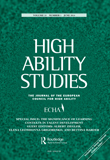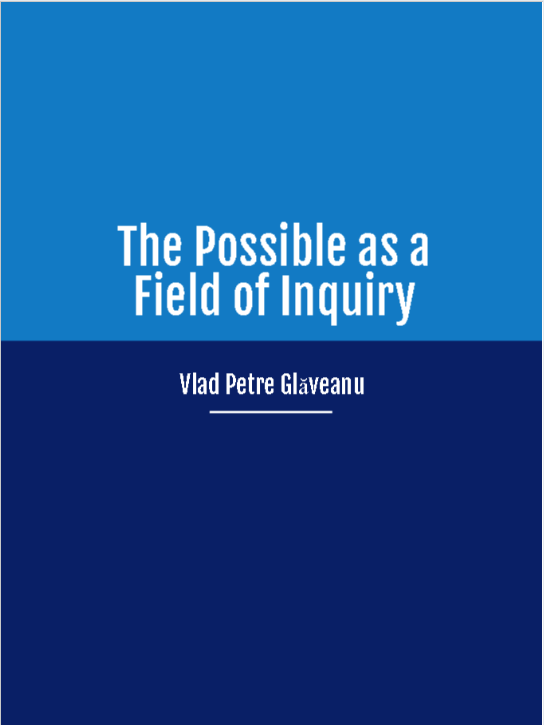 2024
2024
 2024
2024

A major question for research on the development of creativity is whether it is interested in creative potential (a prospective approach that uses measures early in life to predict adult creativity) or in children's creativity for its own sake. We suggest that a focus on potential for future creativity diminishes the fascinating creative world of childhood. The contributions to this issue can be organized in light of an ability × motivation framework, which offers a fruitful way for thinking about the many factors that foster and impede creativity. The contributions reflect a renewed interest in the development of creativity and highlight how this area can illuminate broader problems in creativity studies.

Russ (2016) - Pretend play: Antecedent of adult creativity
This article reviews the theoretical and empirical literature in the area of pretend play as a predictor of adult creativity. There is strong evidence that processes expressed in pretend play are associated with measures of creativity, especially with divergent thinking. There is some evidence from longitudinal studies that this association is stable over time. Converging evidence suggests that cognitive and affective processes in pretend play are involved in adult creative production. However, there is a lack of consensus in the field as to whether engaging in pretend play actually facilitates creative thinking. In addition, many other variables (opportunity, tolerance for failure, motivation, work ethic, etc.) determine whether children with creative potential are actually creative in adulthood. In spite of the many methodological challenges in conducting research in the play area, it is important to continue investigating specific processes expressed in play and their developmental trajectories. Large samples in multisite studies would be ideal in investigating the ability of specific play processes to predict these creative processes and creative productivity in adulthood.

Beghetto & Kaufman (2014) - Classroom contexts for creativity
Various factors influence the development of creative potential, including everything from individual differences to the kinds of experiences and opportunities that creators experience throughout the lifespan. When it comes to nurturing creativity in the classroom, the learning environment is one of the most important factors – determining, in large part, whether creative potential will be supported (or suppressed). In short, classroom context matters. It is one thing to recognize that the classroom environment impacts the development of creative potential, it is quite another to understand just what it takes to develop an optimally supportive creative learning environment. This is because many of the features of optimal learning environments are quite subtle and even counterintuitive. In this paper, we discuss insights from the research on how teachers might establish a creativity-supportive learning environment in their classroom.

Glăveanu (2018) - The Possible as a Field of Inquiry
In this editorial I introduce the possible as an emerging field of inquiry in psychology and related disciplines. Over the past decades, significant advances have been made in connected areas – counterfactual thinking, anticipation, prospection, imagination and creativity, etc. – and several calls have been formulated in the social sciences to study human beings and societies as systems that are open to possibility and to the future. However, engaging with the possible, in the sense of both becoming aware of it and actively exploring it, represents a subject in need of further theoretical elaboration. In this paper, I review several existing approaches to the possible before briefly outlining a new, sociocultural account. While the former are focused on cognitive processes and uphold the old dichotomy between the possible and the actual or real, the latter grows out of a social ontology grounded in notions of difference, positions, perspectives, reflexivity, and dialogue. In the end, I argue that a better understanding of the possible can help us cultivate it in both mind and society.